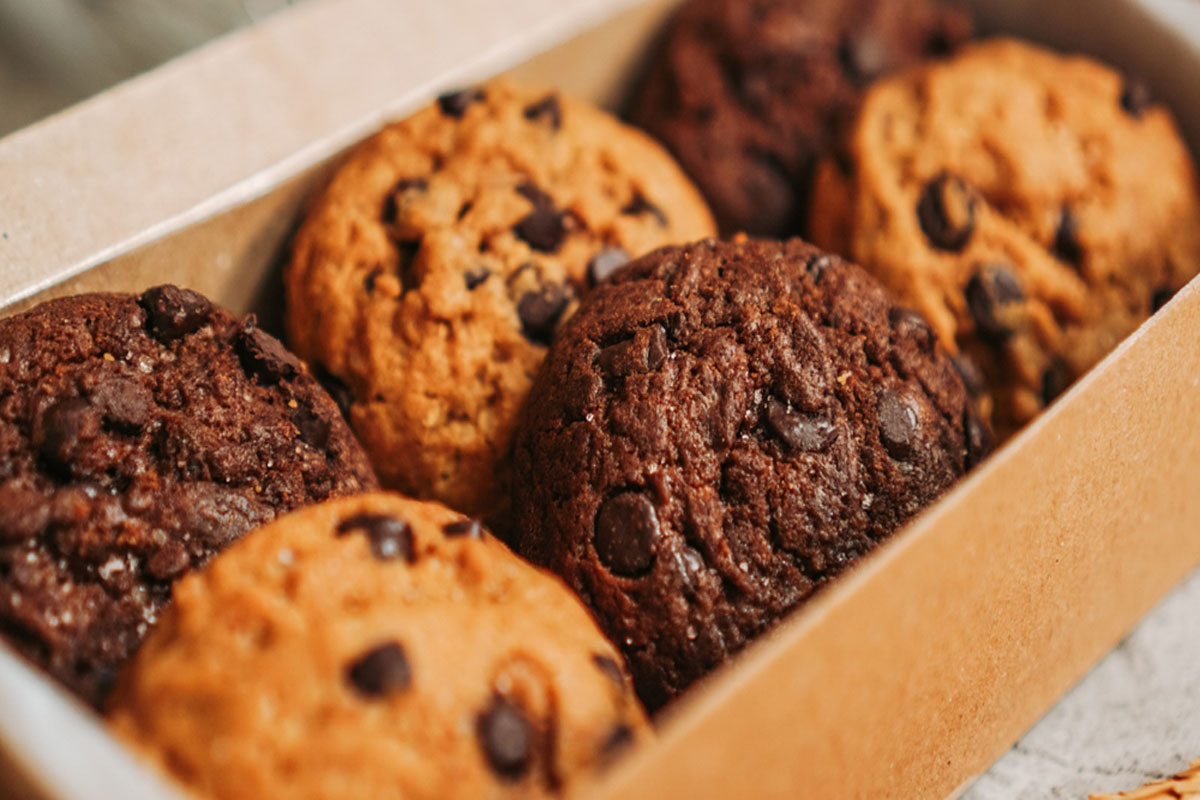When it comes to cookies, everyone has their favorite texture. Some crave a soft, chewy bite that melts in the mouth, while others prefer a crisp, golden cookie with a satisfying crunch. The good news is that the texture of your cookies isn’t left to chance. By understanding the science behind the ingredients and techniques, you can tailor your cookies to be as chewy or crispy as you like. Here’s a guide to achieving your ideal cookie texture.
1. The Role of Ingredients
The texture of your cookies is largely determined by the ingredients you use and how you use them. Here’s how each component influences the final product:
- Flour:
- More flour creates structure and contributes to a chewier texture.
- Less flour leads to thinner, crispier cookies.
- Sugar:
- Brown sugar contains molasses, which adds moisture and chewiness.
- White sugar promotes spreading and a crisper texture.
- Butter:
- Melted butter results in denser, chewier cookies.
- Creamed butter traps air, leading to lighter, crispier cookies.
- Eggs:
- Egg yolks add richness and chewiness.
- Egg whites create a drier, crispier texture.
- Leavening Agents:
- Baking soda encourages spreading, making cookies thinner and crispier.
- Baking powder leads to puffier, softer cookies.
2. Techniques for Chewy Cookies
If you’re aiming for cookies with a soft, chewy center, follow these tips:
- Use Brown Sugar: Replace some or all of the white sugar in your recipe with brown sugar for added moisture.
- Add an Extra Egg Yolk: Egg yolks are rich in fat, which enhances chewiness.
- Melt the Butter: Melted butter prevents air from being incorporated, resulting in denser cookies.
- Chill the Dough: Refrigerate the dough for at least 30 minutes. This slows spreading and helps maintain thickness.
- Slightly Underbake: Remove the cookies from the oven when the edges are set but the centers are still soft. They will continue to cook as they cool.
3. Techniques for Crispy Cookies
For cookies that are thin, golden, and crisp, try these strategies:
- Use More White Sugar: White sugar promotes spreading and helps create a crisp texture.
- Reduce Moisture: Limit brown sugar and eggs to reduce moisture in the dough.
- Use Room Temperature Butter: Cream the butter with sugar to incorporate air, resulting in a lighter, crisper cookie.
- Thin the Dough: Press down on the cookie dough balls before baking to encourage spreading.
- Bake Longer at a Lower Temperature: Baking at 325°F for a longer time allows the cookies to dry out and become crisp without burning.
4. Other Factors to Consider
- Oven Temperature: A hotter oven encourages cookies to set quickly, leading to a chewier center. A lower temperature gives the dough more time to spread, resulting in crispier edges.
- Baking Surface:
- Use parchment paper or a silicone mat for chewier cookies.
- Bake directly on an unlined sheet for crisper results.
- Cooling Method: Transfer cookies to a wire rack immediately after baking for a crisp exterior. Leaving them on the baking sheet traps steam, making them softer.
5. Customizing Your Cookies
Don’t be afraid to experiment with the ratios and techniques to find your perfect cookie texture. Here’s a quick guide to customizing:
- For Chewy Cookies:
- Increase brown sugar.
- Add an extra yolk or slightly reduce flour.
- Chill dough and bake at a higher temperature (375°F).
- For Crispy Cookies:
- Increase white sugar.
- Use more butter and less flour.
- Bake at a lower temperature (325°F) for longer.
6. Troubleshooting Tips
- Too Flat: Add more flour or chill the dough to prevent excessive spreading.
- Too Puffy: Reduce the leavening agent and use a combination of white and brown sugar.
- Too Hard: Underbake slightly and store cookies in an airtight container to maintain softness.
- Too Soft: Extend the baking time and allow cookies to cool fully on a wire rack.
Conclusion
The beauty of cookie baking lies in its versatility. Whether you’re craving a soft, chewy cookie that feels like a warm hug or a crispy treat with a delightful crunch, mastering the art of ingredient balance and baking technique is key. Experiment with these tips to create your ideal cookie and enjoy the sweet rewards of baking perfection!

